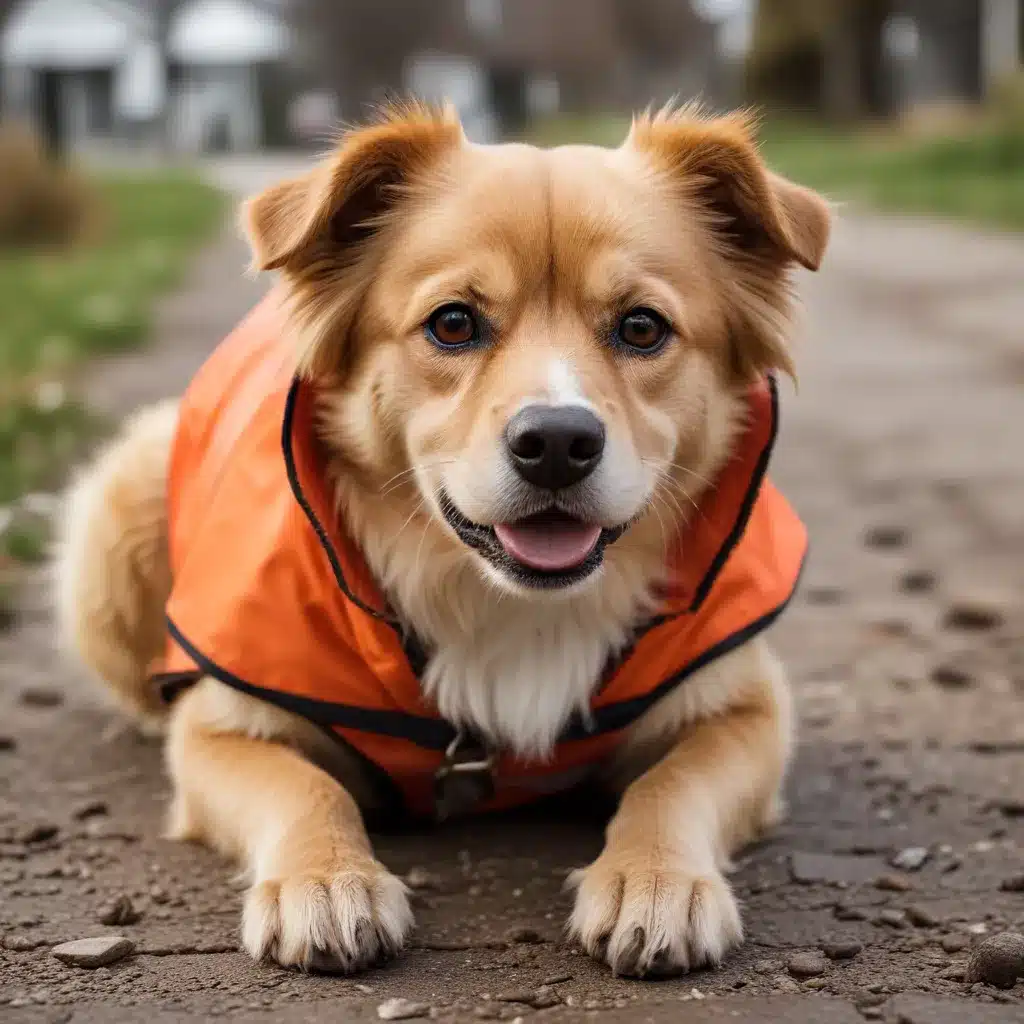
As an experienced water damage restoration specialist in the Orlando area, I’ve seen firsthand the devastating impact that natural disasters can have on our furry friends. From flash floods to powerful hurricanes, our pets are just as vulnerable as we are during these emergency situations. That’s why it’s crucial for pet owners in Orlando to have a comprehensive disaster preparedness plan in place.
Safeguarding Your Pets: The Essentials
One of the most important things to remember is that if it’s not safe for you to stay in your home during a disaster, it’s not safe for your pets either. They depend on us completely, and we have a responsibility to ensure their wellbeing when the unexpected happens. That’s why including your pets in your family’s emergency plan is absolutely essential.
First and foremost, make sure your pets are microchipped and wearing collars with up-to-date identification tags. This increases the chances of being reunited if they become separated from you during an evacuation. It’s also a good idea to keep a recent photo of your pet on hand, just in case.
Next, assemble a pet emergency kit that you can grab quickly if you need to leave your home. This kit should include essential supplies like food, water, medication, pet first aid items, and any comfort items your pet may need, like toys or blankets. Keep everything stored in a sturdy, easy-to-carry container.
Where to Shelter Your Pets
One of the biggest challenges pet owners face during a disaster is finding a safe place to shelter their animals. Many hotels and emergency shelters do not accept pets, aside from service animals. That’s why it’s crucial to have a plan in place ahead of time.
Start by identifying pet-friendly hotels or kennels outside of the affected area where you could potentially take your pets. You might even consider asking trusted friends or family members who live in less vulnerable areas if they can temporarily care for your pets. The key is to have multiple backup options lined up, just in case your primary plan falls through.
If you must evacuate and can’t find an appropriate shelter for your pets, never leave them behind. Pets left alone during a disaster are at serious risk of injury, illness, or even death. Instead, make the difficult decision to take them with you, even if it means making multiple trips or staying in your car. Their safety is simply too important to compromise.
Preparing Pets for Emergencies
In addition to having the right supplies on hand, it’s crucial to take steps to prepare your pets for potential emergencies. Get them used to being transported in their carriers or crates, and practice quick evacuations so they’re less stressed when the real thing happens.
It’s also a good idea to keep your pets’ vaccinations up-to-date and have a copy of their medical records easily accessible. This information can be crucial if you need to board them or seek veterinary care during a crisis.
For larger animals like horses or livestock, planning ahead is even more critical. Work with your veterinarian to create an emergency action plan, and identify safe locations where you can temporarily house your animals if you need to evacuate. Having a trailer or other transportation readily available can make all the difference in an emergency.
Weathering the Storm: Keeping Pets Safe During Disasters
When a disaster strikes, your pets may exhibit sudden changes in behavior, becoming uncharacteristically aggressive or anxious. It’s important to be aware of this and take steps to keep both your pets and other people safe.
Confine your pets to a single room or crate during the height of the emergency, and avoid letting them outside unless absolutely necessary. This will help minimize their stress and the risk of them running away or getting injured. If your pets do need to go outside, keep them on a secure leash at all times.
Remember, too, that standing water and other post-disaster hazards can pose serious risks to your pets. Be vigilant about potential health and safety concerns, and consult your veterinarian if you have any worries about your animal’s wellbeing.
The Aftermath: Caring for Pets After a Disaster
Even once the immediate crisis has passed, the aftermath of a disaster can be just as challenging for our four-legged friends. Familiar surroundings may be disrupted, and the stress of the experience can take a toll on their mental and physical health.
If you’ve had to evacuate, be patient and take things slowly when you return home. Gradually reintroduce your pets to their environment, and be attentive to any signs of distress or disorientation. Provide extra cuddles, playtime, and reassurance to help them feel safe and secure again.
It’s also important to carefully inspect your home and property for any potential hazards before letting your pets roam freely. Floodwaters, fallen debris, and even displaced wildlife can all pose serious dangers. Take the time to thoroughly check your yard and home before allowing your furry companions to explore.
A Final Thought: The Importance of Planning Ahead
As a water damage restoration specialist in Orlando, I’ve seen firsthand the devastating impact that natural disasters can have on our beloved pets. But I’ve also seen the incredible resilience and strength of the human-animal bond, especially when pet owners are prepared.
By taking the time to create a comprehensive disaster preparedness plan for your pets, you’re not just safeguarding their wellbeing – you’re also giving yourself one less thing to worry about during an emergency. And in the chaos of a crisis, that peace of mind can make all the difference.
So, I encourage all pet owners in the Orlando area to visit the homepage of our website to learn more about disaster preparedness and emergency planning for your furry friends. Your pets are counting on you, and with a little preparation, you can help ensure their safety no matter what Mother Nature has in store.

